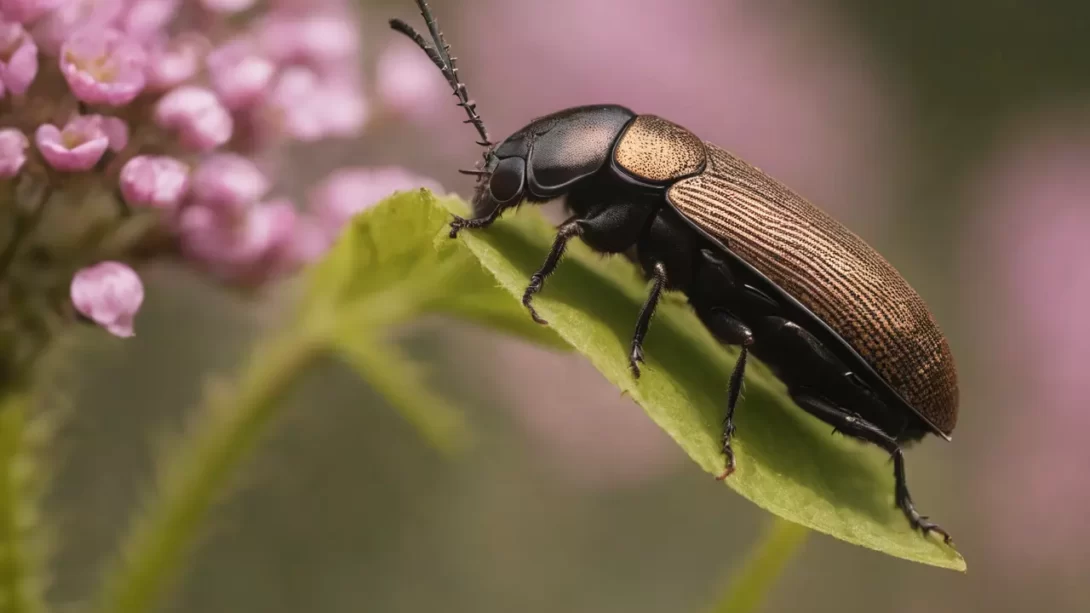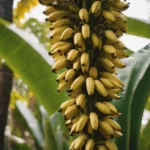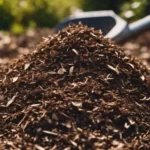Click beetles are a common pest in both gardens and homes, known for the distinctive clicking sound they make when flipping themselves upright. While they may not be as destructive as some other garden pests, their presence can be a nuisance, and in large numbers, they can cause damage to plants. Effective management of click beetles involves understanding their behavior, lifecycle, and the various methods available to control their population. This article provides a comprehensive guide to identifying, understanding, and ultimately controlling click beetles in your environment.
Identifying Click Beetles
Click beetles can be identified by their elongated bodies, which range in size from 0.5 to 1.5 inches, and their colors, which vary from black, brown, to gray. They are most recognizable by their ability to leap into the air making a clicking noise, a mechanism they use to right themselves when turned over. These beetles are typically nocturnal and are attracted to lights at night. Identifying them correctly is the first step in managing their presence, as it allows you to tailor your control strategies effectively to this specific pest.
Click Beetle Lifecycle
Understanding the lifecycle of the click beetle is key to effective control. Their lifecycle includes four stages: egg, larva (wireworm), pupa, and adult. The larvae, known as wireworms, live in the soil and feed on plant roots, seeds, and underground stems, which can cause significant damage to crops and garden plants. The adults, in contrast, are generally harmless. Targeting the larval stage is often the most effective way to reduce future populations. Knowing where in their lifecycle the beetles are can help you choose the most effective treatment method.
Preventative Measures
Preventing click beetle infestations is often easier and more effective than trying to eliminate them once established. To deter these pests:
- Maintain a Clean Garden: Remove plant debris and weeds, as these can provide shelter for beetles and larvae.
- Proper Lighting: Reduce outdoor lighting at night or use yellow bulbs, which are less attractive to adult click beetles.
- Soil Health: Keep the soil healthy and well-drained. Overly moist conditions can attract click beetles.
- Inspect New Plants: Carefully check new plants before introducing them to your garden to avoid bringing in pests.
Natural Control Methods
Habitat Alteration
Making your garden less inviting to click beetles can significantly reduce their numbers. This includes:
- Regularly turning the soil to expose larvae to predators.
- Encouraging a diverse ecosystem in your garden that includes natural predators of click beetles.
Biological Control
Introduce or encourage natural predators of click beetles, such as birds, toads, and beneficial nematodes, which can help control the larval population.
DIY Traps
You can create simple traps using containers filled with a mixture of molasses and water, which attract and drown the adult beetles.
Chemical Control Options
Chemical control should be considered as a last resort, due to its potential impact on the environment and non-target species. If necessary:
- Choose Appropriate Insecticides: Select insecticides that are effective against click beetles. Always opt for products specifically labeled for use against this pest.
- Timing of Application: Apply chemicals during the early stages of infestation, targeting the larvae for more effective control.
- Follow Safety Guidelines: Always adhere to the manufacturer’s instructions for safe application, and consider the impact on beneficial insects and the surrounding ecosystem.
- PROTECTIVE BARRIER: The concentrate creates a barrier around your home against box elder bugs, stink bugs, Asian ladybugs, and other household insects. You can use it to treat your foundation, windows, and doors or anywhere that bugs can enter your home.
- WATER-BASED FORMULA: Our formula is water-based combined with other effective ingredients that make it odorless and non-staining. It won’t wash away in the rain and will remain effective for weeks.
- EFFECTIVE STRENGTH: The contact insecticide is designed to kill common household insects that try to enter your home or spaces. When an insect comes in contact with a treated area or it is sprayed directly it works to effectively kill them.
- USAGE: The concentrate is designed to be used in typical spraying equipment and should be mixed with water as directed. Once it is mixed you can easily begin spraying around your home or other needed spaces.
- BUGG PRODUCTS: With over 30 years of experience Bugg continues to create products that effectively work to protect you and your spaces from all kinds of insects without the normal chemical bug spray smell.
Cultural Practices in the Garden
Implementing certain cultural practices can significantly reduce the impact of click beetles in your garden:
- Crop Rotation: Regularly rotate crops, especially in vegetable gardens, as this can disrupt the lifecycle of wireworms.
- Soil Cultivation: Tilling the soil exposes larvae and pupae, making them vulnerable to predators and environmental factors.
- Choosing Resistant Varieties: Plant varieties that are less susceptible to wireworm damage, especially in areas known to have high click beetle populations.
Monitoring and Ongoing Management
Effective management of click beetles involves regular monitoring:
- Regular Inspections: Regularly inspect your garden, especially during the evening or at night, to spot adult click beetles.
- Soil Sampling: Periodically check the soil for wireworms, particularly before planting new crops.
- Long-Term Strategy: Develop an integrated pest management plan that combines different methods (cultural, natural, and chemical, if necessary) to keep click beetle populations under control.
Common Mistakes to Avoid
When dealing with click beetles, avoid these common mistakes:
- Overuse of Chemicals: Excessive use of insecticides can harm beneficial insects and lead to resistance in pests.
- Ignoring Early Signs: Failing to address the first signs of an infestation can allow it to escalate.
- Neglecting Soil Health: Poor soil management can create favorable conditions for wireworms.
- Lack of Biodiversity: Not promoting a diverse ecosystem in your garden can reduce natural predation of click beetles.
Conclusion
Controlling click beetles requires a combination of preventative measures, natural control methods, and, if necessary, careful use of chemical options. By understanding their lifecycle and implementing effective cultural practices, you can significantly reduce the impact of these pests in your garden. Regular monitoring and an integrated management approach will help maintain a healthy, balanced garden ecosystem, minimizing the need for intervention. Remember, the key to managing garden pests effectively lies in a proactive, informed approach that prioritizes the health of both your plants and the environment.




